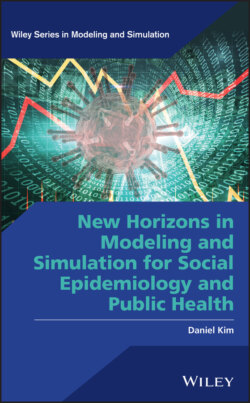Читать книгу New Horizons in Modeling and Simulation for Social Epidemiology and Public Health - Daniel Kim - Страница 18
1.6 Novel Approaches to Strengthen Causal Inference in Studying the Social Determinants of Health
ОглавлениеA growing body of literature is attempting to reduce alternative explanations and other sources of bias in nonexperimental studies on the social determinants of health and more generally within public health. These novel approaches to strengthen causal inference include but are not limited to instrumental variable (IV) analysis, fixed effects analysis, propensity score analysis, inverse probability weighting, and natural experiments. By isolating random variation in the exposure, IV analysis can yield unbiased estimates of the causal association between an exposure and outcome, including through reducing attenuation bias due to measurement error and confounding bias due to both observed and unobserved factors (Kim 2016). Such approaches are increasingly being used to evaluate the causal roles of risk factors in public health, including obesity, neighborhood conditions, the social environment, and state policies (Davey Smith et al. 2009; Fish et al. 2010; Kim et al. 2011; Mojtabai and Crum 2013; Hawkins and Baum 2014; Kim 2016).
Similar to multivariable regression, propensity score analysis can control for imbalances between comparison groups and can thereby control for confounding. It has the advantage of being more efficient than traditional regression when there are relatively fewer events (Cepeda et al. 2003). However, like multivariable regression, propensity score analysis cannot control for unobserved or unmeasured confounders. Inverse probability weighting has also been used as an approach to estimate the counterfactual or potential outcome if all subjects were assigned to either exposure/treatment (Mansournia and Altman 2016). Finally, natural experiments or other quasi‐experimental designs such as regression discontinuity designs (Moscoe et al. 2015) can exploit random variation in exposures as in an experimental study and can thereby minimize confounding due to both observed and unobserved factors as a source of bias.
Results from individual studies can also be qualitatively reviewed in aggregate to identify existing gaps in methodological approaches, potential sources of bias, and similarities/differences in their results. Results across studies can be quantitatively summarized in meta‐analyses that yield overall point estimates of exposure–outcome associations, although, importantly, such estimates are only as good as the quality of the studies that are included in the meta‐analyses (Egger et al. 2001).
